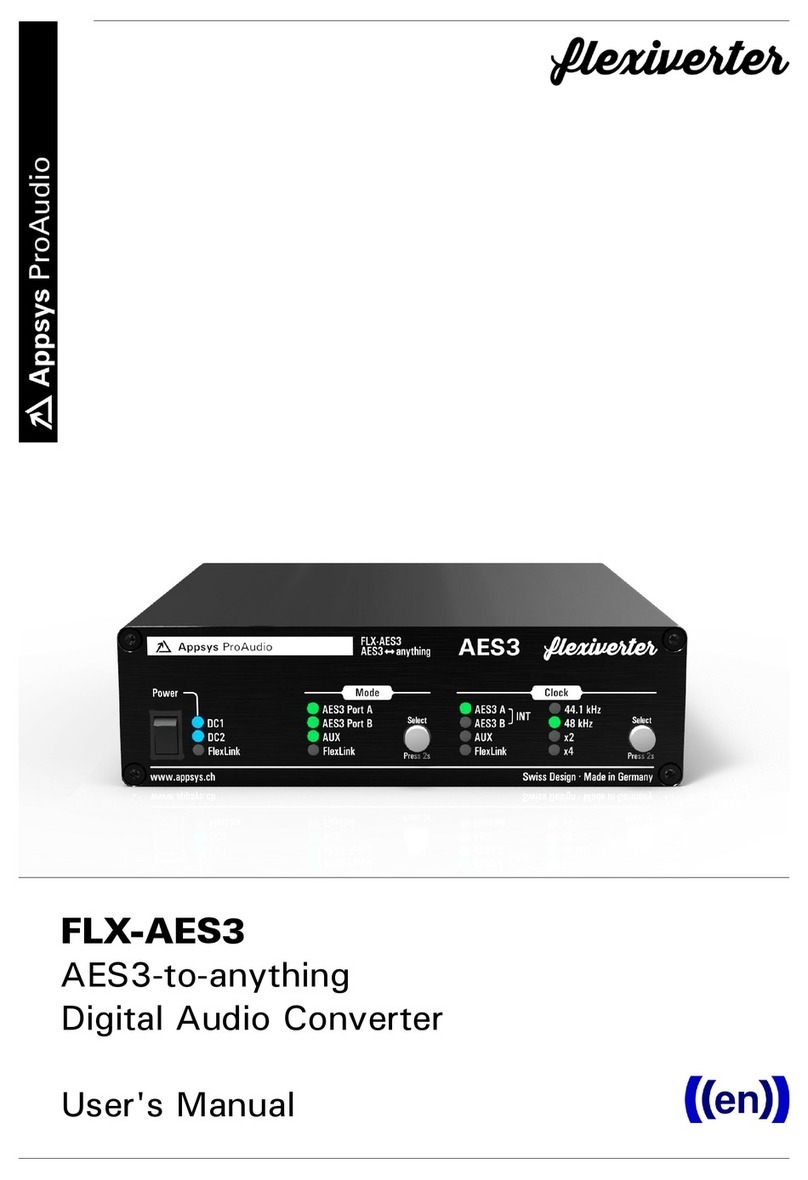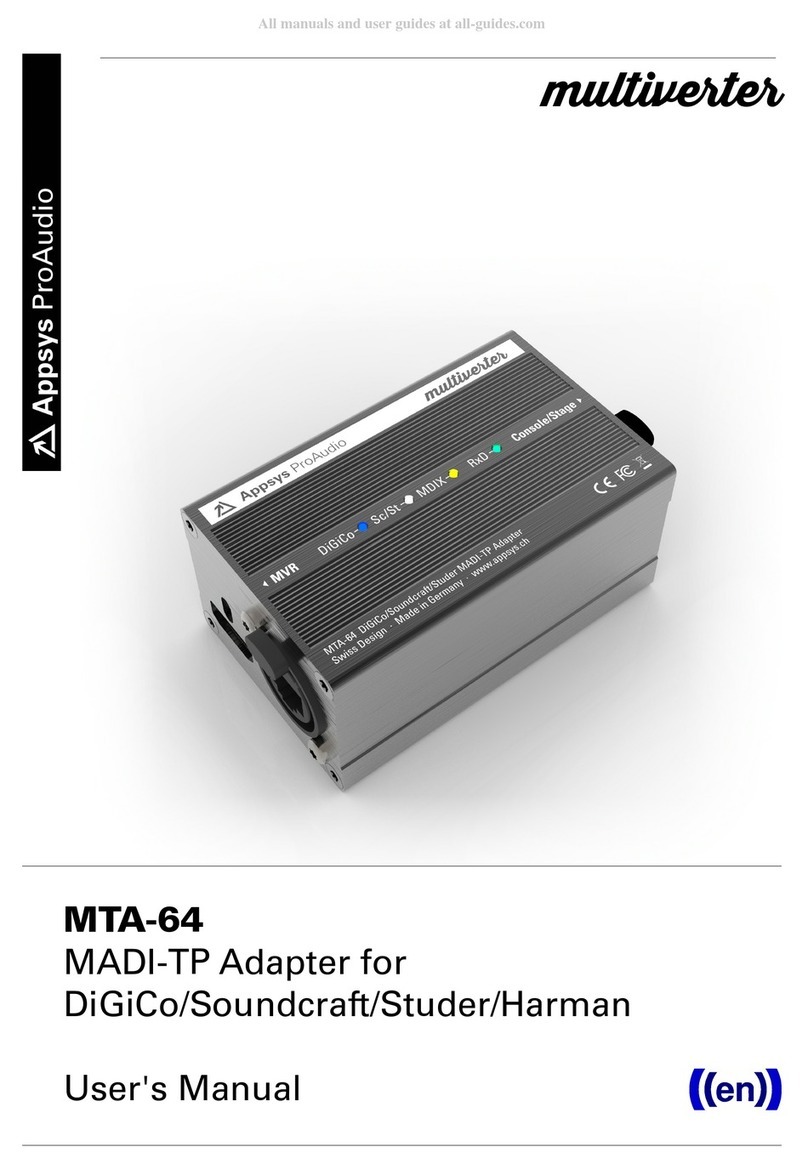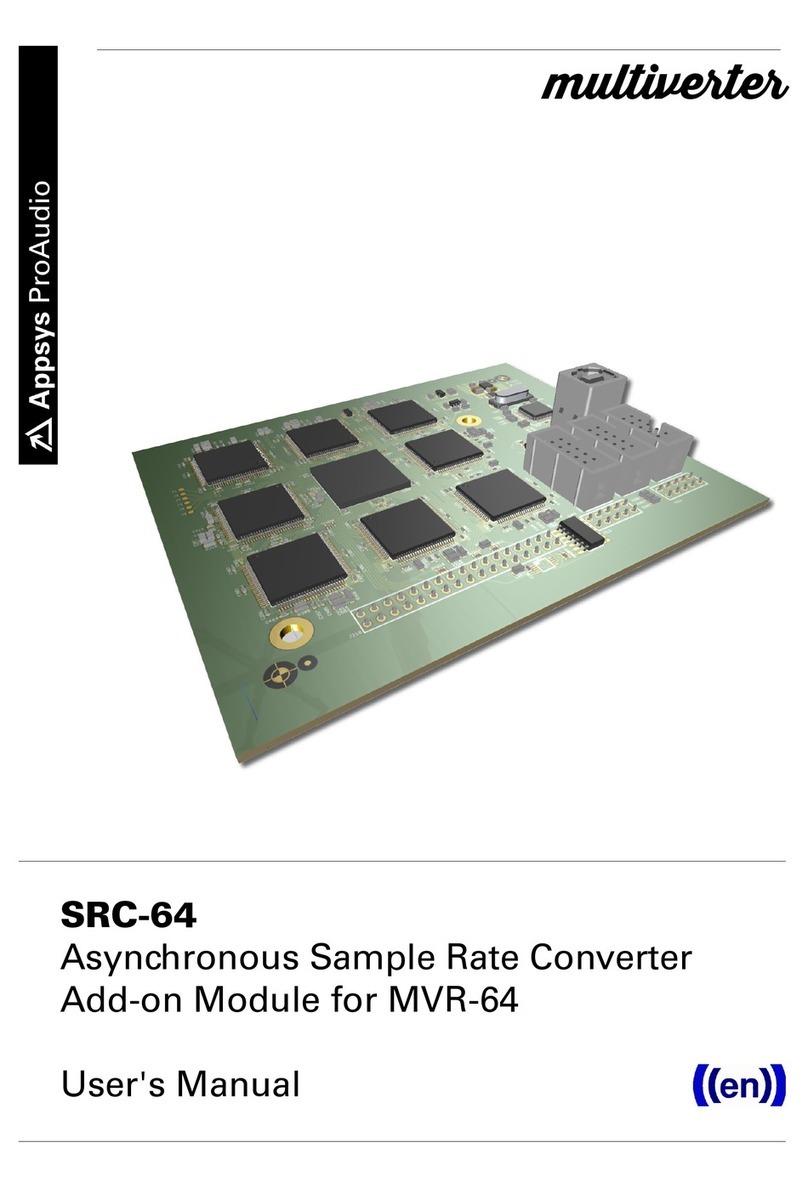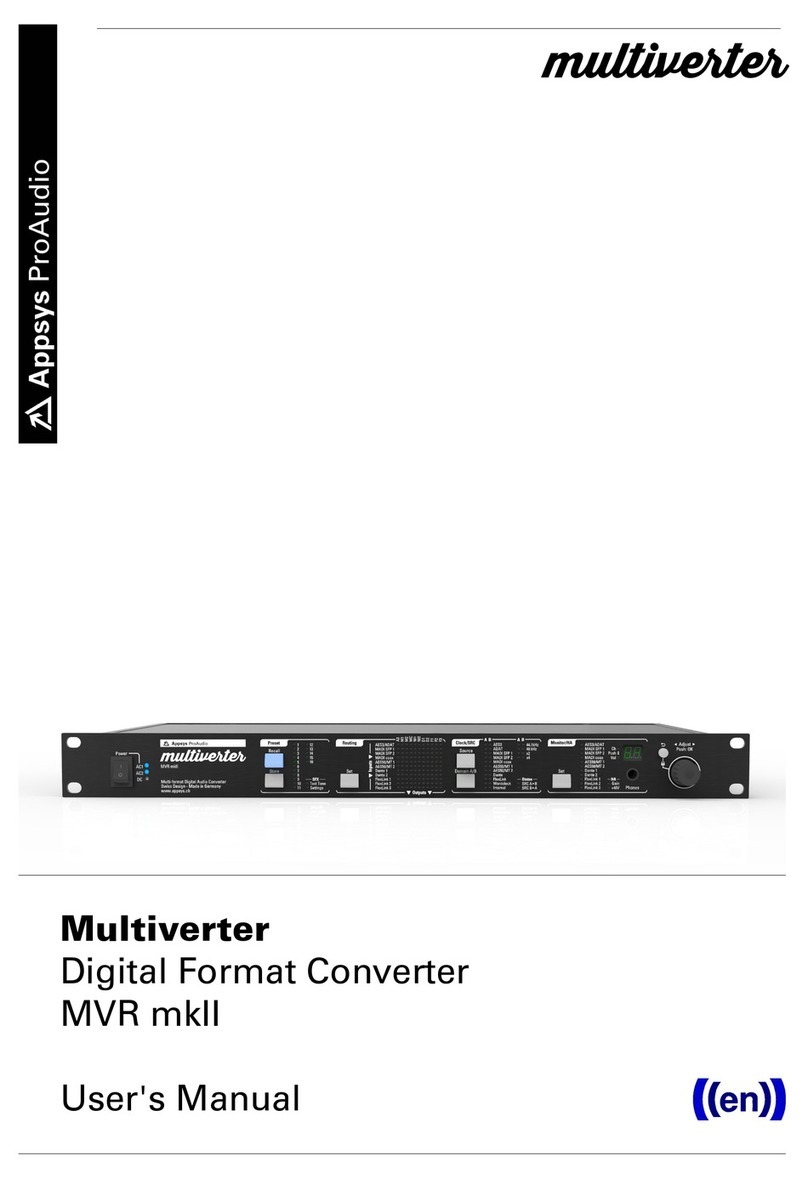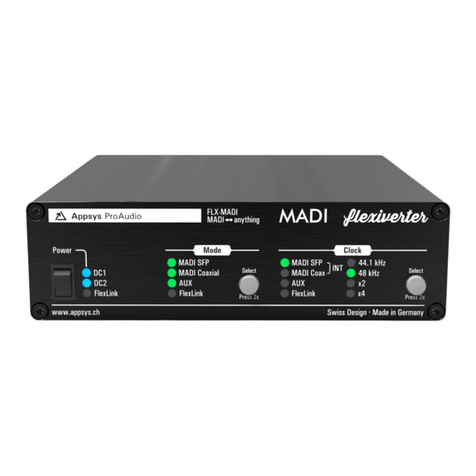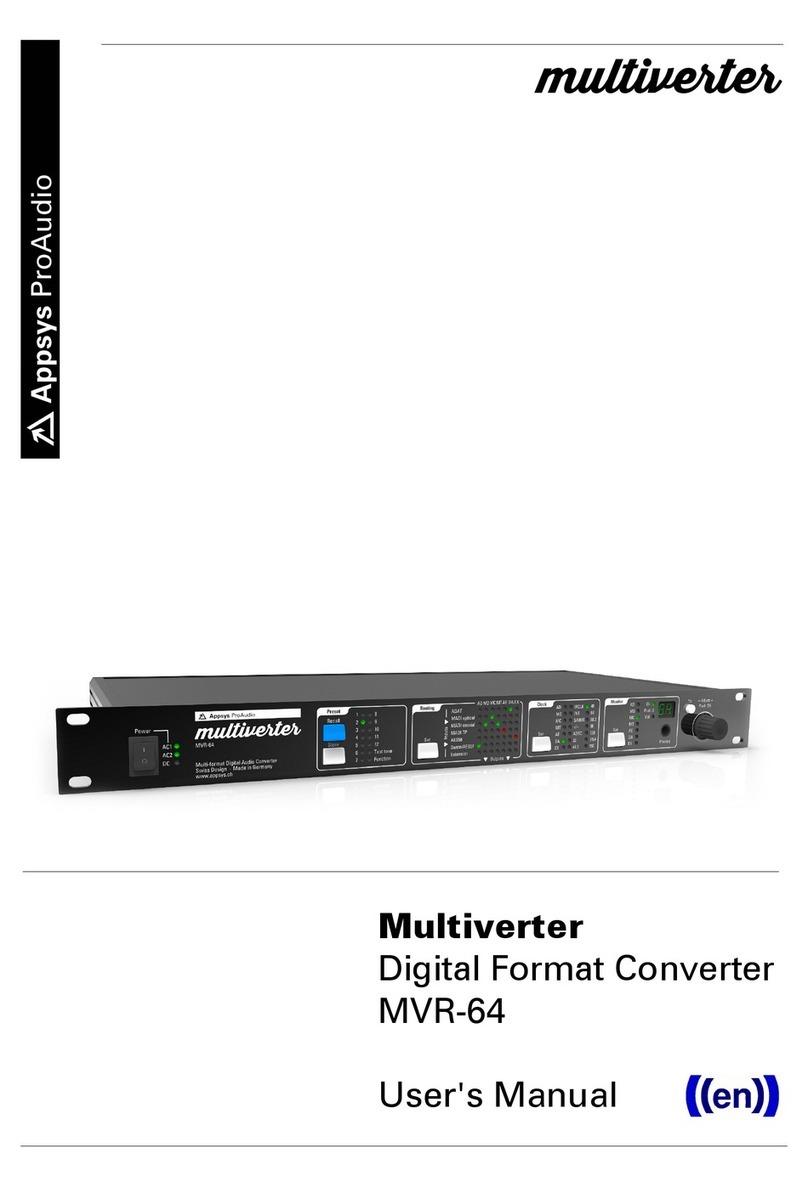User's Manual
Table of Contents
1. GENERA .....................................................................................................................................4
1.1. Conventions used in this manual.......................................................................................4
1.2. Safety precautions..............................................................................................................5
1.3. Foreword..............................................................................................................................5
1.4. Box Contents........................................................................................................................5
2. INTRODUCTION.........................................................................................................................6
2.1. Front panel...........................................................................................................................6
2.2. Rear panel............................................................................................................................6
2.3. Overview..............................................................................................................................7
2.4. User interface......................................................................................................................7
3. CONNECTIONS OVERVIEW.....................................................................................................12
3.1. AC Power............................................................................................................................12
3.2. DC Power...........................................................................................................................12
3.3. ADAT/SPDIF/AES3 optical................................................................................................12
3.4. PC/USB...............................................................................................................................13
3.5. RS485.................................................................................................................................13
3.6. Extension...........................................................................................................................14
3.7. MADI optical.......................................................................................................................14
3.8. MADI BNC..........................................................................................................................15
3.9. MADI TP.............................................................................................................................15
3.10. AES50...............................................................................................................................15
3.11. Wordclock.........................................................................................................................16
3.12. Dante/AES67....................................................................................................................16
3.13. MIDI..................................................................................................................................17
3.14. Control data forwarding.................................................................................................17
4. PRESETS....................................................................................................................................19
4.1. Preset Recall.......................................................................................................................19
4.2. Preset Store.......................................................................................................................20
4.3. Changed presets...............................................................................................................20
4.4. Auto-Store..........................................................................................................................21
5. ROUTING..................................................................................................................................22
6. C OCKING.................................................................................................................................26
6.1. ClockShield........................................................................................................................26
6.2. Clock source selection......................................................................................................27
6.3. Dante Clock........................................................................................................................29
7. PANE OCK..............................................................................................................................30
8. MONITOR..................................................................................................................................31
9. ADVANCED TOPICS..................................................................................................................33
9.1. Test tone mode..................................................................................................................33
9.2. Configuration settings......................................................................................................33
2
